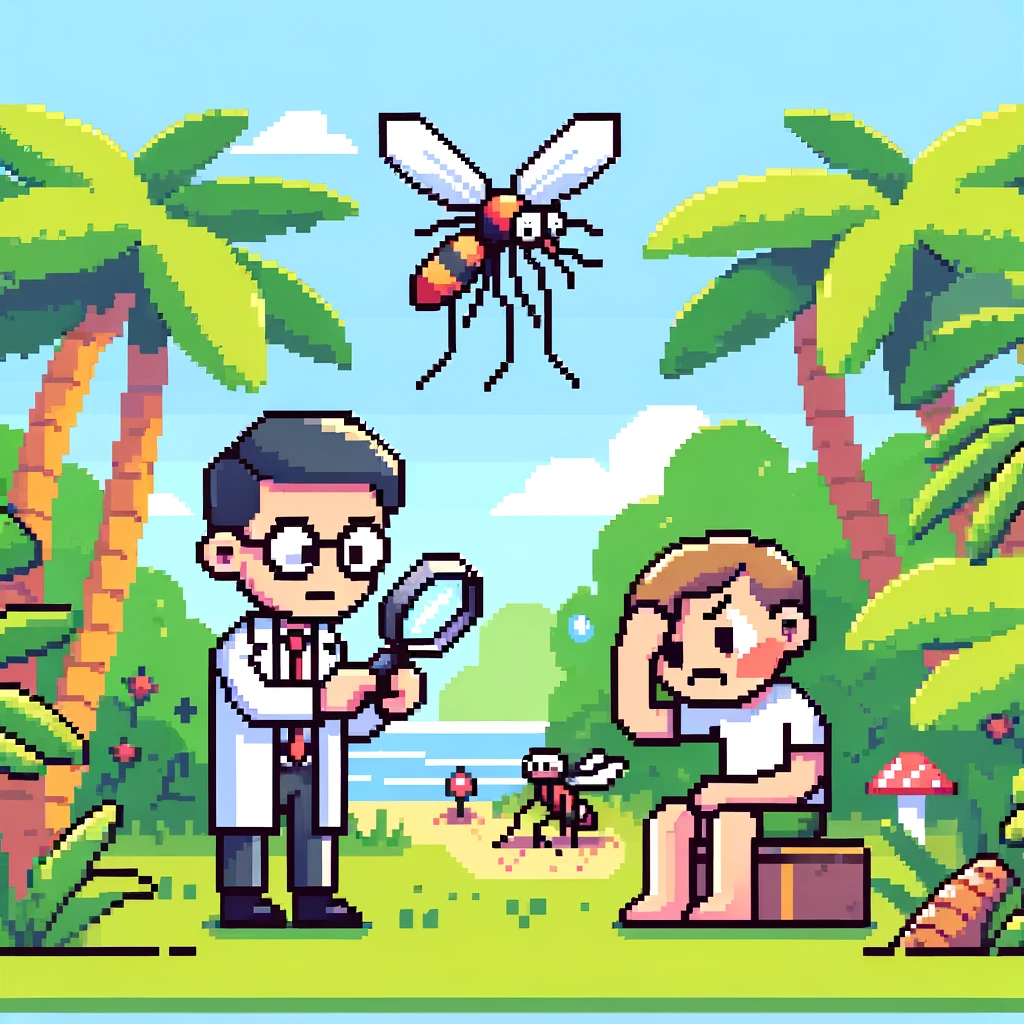
Oropouche Fever: An Emerging Threat in the Americas
In recent years, Oropouche fever has quietly become one of the most significant yet lesser-known health threats in South and Central America. Recently, news outlets are reporting an outbreak in several countries, including our very close neighbor to the south, Cuba..
Despite being the second most frequent arboviral disease in Brazil, trailing only dengue, many outside of the affected regions remain unaware of its potential impact. This blog delves into the fascinating yet concerning world of Oropouche fever,
What is Oropouche Fever?
Oropouche fever is an acute febrile illness caused by the Oropouche virus (OROV), which belongs to the Orthobunyavirus genus. This virus is primarily transmitted to humans through the bite of the biting midge, Culicoides paraensis. The fever manifests with symptoms similar to other tropical diseases such as dengue, chikungunya, and Zika, making it challenging to diagnose correctly. Common symptoms include fever, headache, muscle and joint pain, and skin rash, which can occasionally progress to more severe neurological conditions like meningitis or encephalitis.
A Brief History of Oropouche Fever
The Oropouche virus was first isolated in 1955 from the blood of a forest worker in Trinidad. Over the past 60 years, more than 30 epidemics have been reported, primarily in Brazil, Peru, Panama, and Trinidad and Tobago. It’s estimated that over half a million clinical cases have occurred during this period. The virus circulates through both urban and sylvatic (forest) transmission cycles, with Culicoides paraensis being the main vector in urban settings.
How Does Oropouche Virus Spread?
The transmission of OROV is complex, involving multiple vectors and hosts. In urban areas, the biting midge Culicoides paraensis is the primary vector, transmitting the virus from infected humans to other humans. In sylvatic cycles, various mosquito species, including Culex quinquefasciatus, Coquillettidia venezuelensis, and Aedes serratus, play a role. The virus is also found in non-human primates, sloths, rodents, and birds, which serve as reservoir hosts.
Interestingly, there is no evidence of direct human-to-human transmission, which underscores the importance of controlling vector populations to prevent outbreaks. Environmental changes, such as deforestation and urbanization, contribute significantly to the spread of the disease by disrupting natural habitats and bringing humans into closer contact with infected vectors and reservoir hosts.
The Challenge of Diagnosis and Treatment
Diagnosing Oropouche fever is particularly challenging due to its symptom overlap with other tropical diseases. Often, it is either undiagnosed or misdiagnosed, which complicates the epidemiological understanding of the disease’s true impact. Laboratory tests like MAC Elisa, PRNT, and RT-PCR are essential for accurate diagnosis but are not always readily available in endemic areas.
Currently, there is no specific antiviral treatment for Oropouche fever. Medical care is primarily supportive, focusing on relieving symptoms. Unfortunately, there is also no vaccine available, making prevention strategies heavily reliant on vector control and personal protection measures. Using insect repellents, wearing protective clothing, and installing bed nets can reduce the risk of being bitten by infected midges.
The Potential for Global Spread
With climate change and increased global travel, the potential for Oropouche fever to spread beyond the Americas is a growing concern. The primary vector, Culicoides paraensis, is found as far north as the southern United States, indicating that the virus could potentially establish itself in new regions under favorable conditions.
The globalization of human and animal transportation further exacerbates this risk. An infected person traveling from an endemic area could introduce the virus to a non-endemic region, where local vectors might perpetuate the cycle of transmission.
Research and Future Directions
The emergence of Oropouche fever highlights the need for increased research and surveillance. Understanding the genetic diversity of the virus and its vectors can provide insights into its evolution and spread. For instance, the virus has multiple genotypes, each with unique distribution patterns and potential impacts on transmission dynamics.
Implementing comprehensive surveillance systems in endemic and at-risk areas can help detect and respond to outbreaks more effectively. Moreover, research into vaccine development and antiviral treatments is crucial to providing long-term solutions to this public health threat.
Let Us Know in the Comments!
- Considering the overlap of symptoms with other tropical diseases, what steps can be taken to improve the diagnosis of Oropouche fever in endemic areas?
- How can global health organizations better prepare for the potential spread of Oropouche fever to non-endemic regions?
Conclusion
Oropouche fever represents a significant yet underrecognized health threat in the Americas. Its potential for wider geographic spread due to environmental and climatic changes, combined with the absence of specific treatments and vaccines, underscores the urgent need for global awareness and action. Through improved surveillance, research, and preventive measures, we can mitigate the impact of this emerging zoonotic disease.
Become a Health Innovator – Get Weekly Updates!
Stay at the forefront of public health with “This Week in Public Health.” Each issue updates you on the latest in research, community health, and advocacy. This newsletter is your tool for being an informed and active member of the health community. Subscribe for free and join a group dedicated to making a real difference in public health.
About the Author
Jon Scaccia, with a Ph.D. in clinical-community psychology and a research fellowship at the US Department of Health and Human Services with expertise in public health systems and quality programs. He specializes in implementing innovative, data-informed strategies to enhance community health and development. Jon helped develop the R=MC² readiness model, which aids organizations in effectively navigating change.
